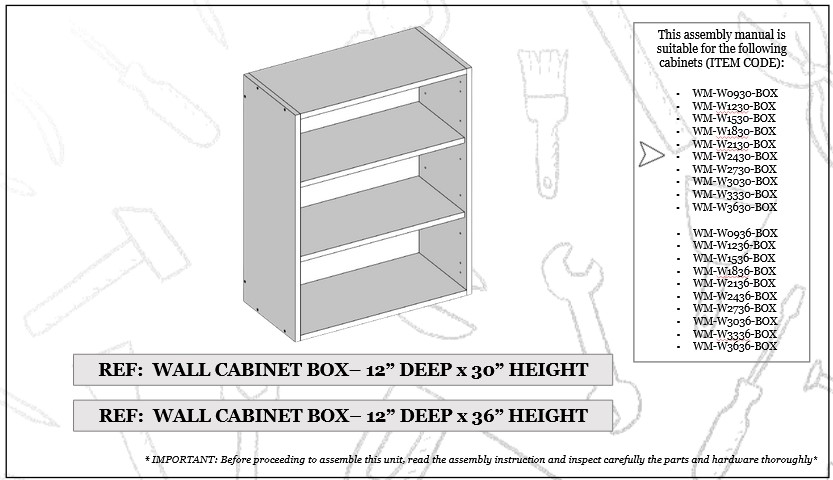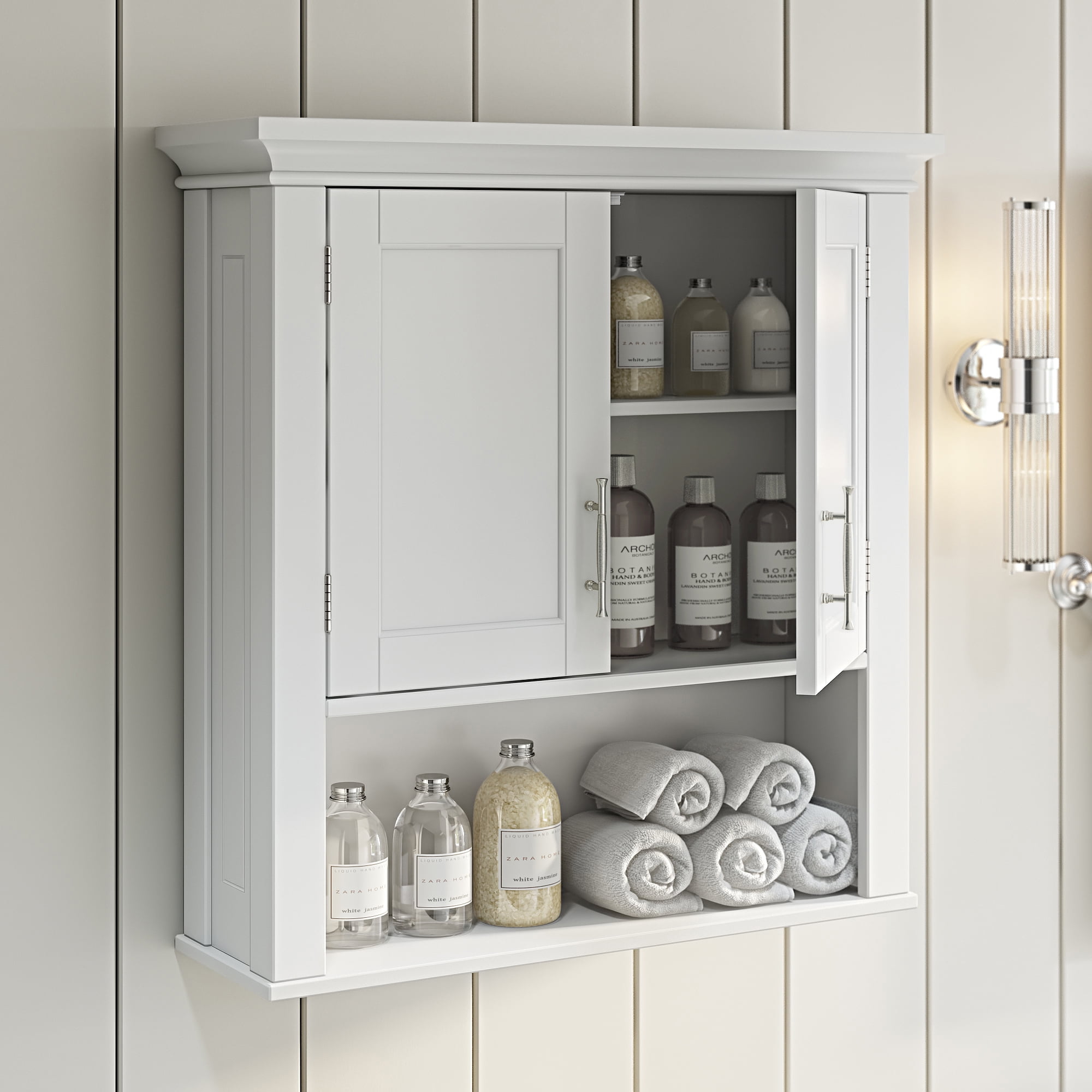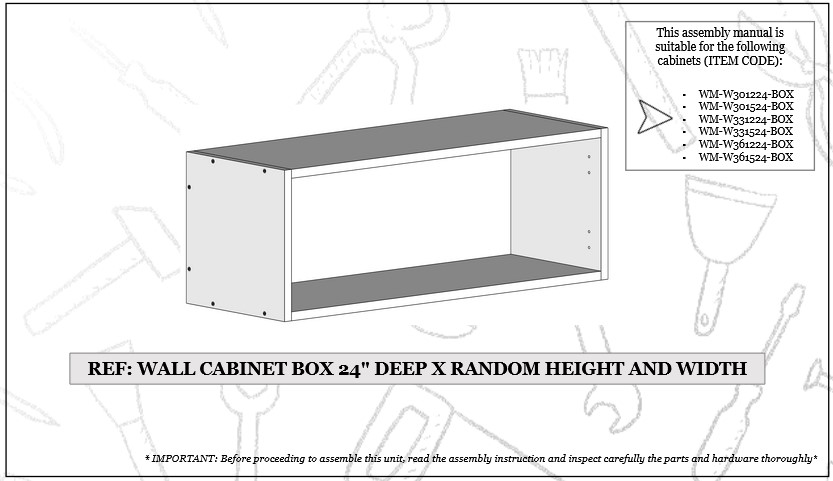Understanding the Bathroom Wall Cabinet

Bathroom wall cabinets are essential for storage and organization in any bathroom. They come in various styles and sizes to suit different needs and aesthetics.
Types of Bathroom Wall Cabinets
Bathroom wall cabinets are available in various styles, each offering unique features and storage solutions.
- Single-door cabinets: These cabinets have a single door that opens to reveal a single storage space. They are compact and ideal for smaller bathrooms or for storing specific items like toiletries or medications.
- Double-door cabinets: These cabinets have two doors, providing more storage space than single-door cabinets. They are suitable for larger bathrooms or for storing a wider variety of items.
- Medicine cabinets: These cabinets are specifically designed for storing medications and toiletries. They typically have a mirrored front and are often recessed into the wall for a seamless look.
- Corner cabinets: These cabinets are designed to fit into corners, maximizing space in smaller bathrooms. They are often triangular or curved to fit the shape of the corner.
- Vanity cabinets: These cabinets are typically part of a bathroom vanity set and offer a combination of storage space and a countertop for sinks and other fixtures.
Common Features of Bathroom Wall Cabinets
Bathroom wall cabinets share common features that contribute to their functionality and aesthetics.
- Materials: Bathroom wall cabinets are typically made from materials like wood, metal, or plastic. Wood cabinets offer a classic look and durability, while metal cabinets provide a modern and sleek aesthetic. Plastic cabinets are budget-friendly and lightweight.
- Finishes: Bathroom wall cabinets are available in various finishes to complement different bathroom styles. Common finishes include painted, stained, or lacquered. These finishes can range from classic white to bold colors and wood grains.
- Hardware: The hardware used on bathroom wall cabinets includes hinges, handles, and knobs. These components are essential for the functionality and aesthetic appeal of the cabinet. Handles and knobs come in various styles and materials, such as chrome, nickel, or brushed brass.
Components of a Bathroom Wall Cabinet Assembly Kit
A typical bathroom wall cabinet assembly kit includes the following components:
- Cabinet body: This is the main structure of the cabinet, typically made of wood or metal.
- Doors: These are the panels that cover the storage space and can be single or double depending on the cabinet style.
- Hinges: These are the metal components that allow the doors to open and close smoothly.
- Hardware: This includes handles, knobs, and other decorative elements.
- Shelves: These are the internal components that provide storage space within the cabinet.
- Mounting hardware: This includes screws, anchors, and other components necessary for attaching the cabinet to the wall.
- Installation instructions: These are the step-by-step guides that provide detailed instructions for assembling and installing the cabinet.
Preparing for Assembly

Before you begin assembling your bathroom wall cabinet, it’s crucial to gather the necessary tools and materials and understand the safety precautions involved.
Tools and Materials
Having the right tools and materials on hand will ensure a smooth and efficient assembly process.
- Screwdriver: A Phillips head screwdriver is typically required for assembling most bathroom wall cabinets. Choose a screwdriver that fits the screws provided with your cabinet.
- Level: A level is essential for ensuring that the cabinet is installed straight and plumb. This will enhance the visual appeal of the cabinet and prevent any potential issues with functionality.
- Measuring Tape: A measuring tape is essential for accurately determining the size and position of the cabinet and ensuring that it fits properly within the space.
- Pencil: A pencil is useful for marking the location of the cabinet on the wall and for any other necessary measurements.
- Drill: A drill may be required for drilling pilot holes for screws or for attaching the cabinet to the wall, depending on the type of wall material.
- Safety Glasses: Protect your eyes from debris or flying objects during assembly.
- Work Gloves: Gloves provide protection for your hands and can help improve grip when handling screws and other small parts.
- Cabinet Hardware: This includes screws, hinges, knobs, or handles that may be necessary for completing the assembly. Ensure all the necessary hardware is included with your cabinet.
Reading the Manufacturer’s Instructions
Carefully reading the manufacturer’s instructions is crucial for ensuring a successful assembly. The instructions will provide step-by-step guidance and essential information, such as:
- Specific Tools and Materials: The instructions may specify particular tools or materials required for assembly. Refer to the instructions for any specific requirements.
- Assembly Sequence: The instructions will Artikel the correct sequence of steps for assembling the cabinet. Following this sequence is crucial for ensuring proper alignment and stability.
- Safety Precautions: The instructions may include specific safety precautions related to the assembly process. It is essential to adhere to these precautions to avoid any potential injuries.
- Troubleshooting Tips: The instructions may also provide troubleshooting tips in case you encounter any difficulties during assembly.
Safety Precautions
Safety should always be a top priority during assembly. Here are some important precautions to take:
- Wear Safety Glasses: Protect your eyes from any debris or flying objects during the assembly process.
- Use Work Gloves: Protect your hands from potential injuries when handling screws and other small parts.
- Work in a Well-Lit Area: Ensure that you have adequate lighting to see clearly and avoid any potential accidents.
- Avoid Distractions: Focus on the assembly process and avoid any distractions that could lead to errors or injuries.
- Follow Instructions Carefully: Adhere to the manufacturer’s instructions for safe and efficient assembly.
Step-by-Step Assembly: Chapter Bathroom Wall Cabinet Assembly Instructions

This section provides a detailed guide on assembling your bathroom wall cabinet. It will walk you through each step, ensuring you have a clear understanding of the process.
Cabinet Preparation
Before starting the assembly, it’s crucial to ensure you have all the necessary components and tools. Carefully unpack the cabinet and its contents, verifying that all parts are present and undamaged.
- Identify all parts: Familiarize yourself with each component, including the cabinet body, shelves, doors, hinges, handles, and mounting hardware.
- Inspect for damage: Examine all parts for any scratches, dents, or defects. If you find any damage, contact the manufacturer immediately.
- Prepare the installation area: Choose a suitable location for your cabinet and ensure the wall is sturdy enough to support its weight. Clear the area of any obstructions.
Cabinet Assembly, Chapter bathroom wall cabinet assembly instructions
The assembly process typically involves attaching the cabinet sides to the back panel, installing shelves, and attaching the doors.
- Attach the sides to the back panel: Align the cabinet sides with the back panel and secure them using the provided screws or fasteners. Make sure the sides are flush with the back panel and the screws are fully tightened.
- Install the shelves: Position the shelves inside the cabinet, ensuring they are level and secure. Some cabinets may have pre-installed shelf supports, while others may require you to attach shelf brackets.
- Attach the doors: Install the hinges on the cabinet doors and the corresponding hinge plates on the cabinet body. Carefully align the doors with the cabinet frame and secure them using the provided screws.
- Install the handles: Attach the handles to the doors using the provided screws or fasteners. Ensure the handles are securely fastened and aligned properly.
Cabinet Installation
Once the cabinet is assembled, you can proceed with its installation on the wall.
- Mark the mounting points: Use a level to determine the desired position for your cabinet and mark the mounting points on the wall.
- Drill pilot holes: If necessary, drill pilot holes at the marked points to make it easier to drive the screws.
- Mount the cabinet: Secure the cabinet to the wall using the provided screws or anchors. Ensure the cabinet is level and securely mounted.
Final Touches
After installing the cabinet, it’s important to complete the final touches to ensure its functionality and aesthetics.
- Adjust the doors: Once the cabinet is mounted, adjust the door hinges to ensure they open and close smoothly.
- Clean the cabinet: Wipe down the cabinet with a damp cloth to remove any dust or debris accumulated during the assembly process.
- Organize your supplies: Arrange your bathroom essentials inside the cabinet, maximizing its storage capacity and keeping your bathroom tidy.
Chapter bathroom wall cabinet assembly instructions – The instructions, a labyrinth of diagrams and cryptic phrases, felt like a map to a forgotten world. Each step, a journey through a sea of screws and brackets, finally leading to a moment of triumph – a functional, yet strangely beautiful, bathroom wall cabinet.
But the true prize, the gleaming sanctuary of order, lay within the realm of the tall white bathroom storage cabinet , a towering sentinel of neatness against the chaos of everyday life. Back to the instructions, back to the task at hand, a symphony of clicks and whirs as the final piece slotted into place, a testament to the power of organization, one cabinet at a time.
The chapter on bathroom wall cabinet assembly instructions might seem mundane, a collection of diagrams and numbered steps, but it holds a hidden beauty. It’s a testament to the careful planning that goes into even the most ordinary objects, the desire to create a functional space.
This meticulousness is mirrored in the elegance of a modern bathroom mirror cabinet , where form and function intertwine. And just as the instructions guide you through the construction of a simple cabinet, the design of such a mirror speaks of a deeper understanding of space, light, and the everyday rituals we perform within it.
